This is the eighth and final in a series of posts, each one about an island we visited on our grand tour of French Polynesia. (The first post was about Mo’orea, the second was about Rangiroa, the third was about Fakarava, the fourth was about Hiva Oa, the fifth was about Nuku Hiva and also included a “status check” on the trip so far, the sixth was about Raiatea and Taha’a, and the seventh was about Maupiti.)
Right off the bat, let me clear up a common misconception – Tahiti is not a country, it’s an island. It’s the largest island, by far, of the approximately 120 islands in the country of French Polynesia. Its main city, Pape’ete, is by far the largest city in French Polynesia. But it’s understandable that so many people think Tahiti is a country – the native language spoken in most of French Polynesia is Tahitian; most people visiting French Polynesia will fly into the international airport on Tahiti; it’s not unusual to see French Polynesia referred to as Tahiti et ses îles (Tahiti and her islands). I guess “Tahiti” is a lot more concise than “French Polynesia”, but just keep in mind that they’re not the same thing. There’s more: Tahiti is a bit odd-shaped (see picture below), with a little nub that sticks out on the southeast part, looking like a separate island, and they even have a name for it – Tahiti Iti – that makes it sound like it’s a separate island. (“Iti” means “small” in Tahitian.) But it’s not a separate island, as the two chunks are connected by an isthmus (look it up). To sum up: Tahiti is the name of an island that looks like two islands, but isn’t; the little part is called Tahiti Iti and the big part is called Tahiti Nui (“big Tahiti”) or just Tahiti. And many people think it’s a country, but it isn’t.
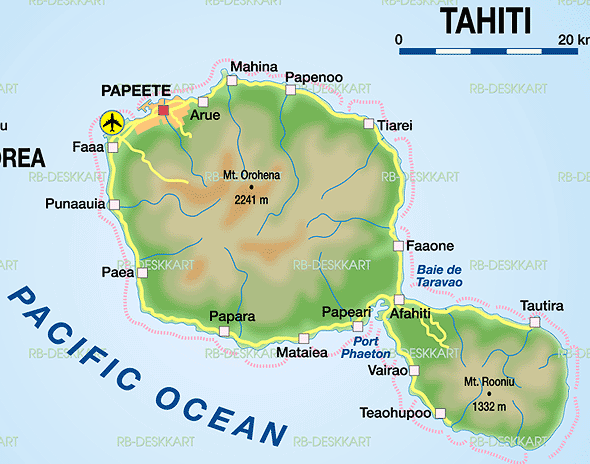
Anyway … Tahiti was the last island we visited on our grand tour of French Polynesia. In the earlier parts of our trip, we had been to Tahiti a couple of times, because it’s the hub for all of Air Tahiti’s flights, and on a couple of occasions, we had to spend the night there between flights to and from other islands. So we knew it was “the big city”, and was going to be very different from the rest of the islands, and honestly, I was prepared to not like it. (We heard that from several people who live on the other islands – that they sometimes have to go to Tahiti, but they really don’t like it. Also, I’m getting more and more curmudgeonly with every passing day.) But we had a great time there, and met some wonderful people, and did some really fun things, so lemme tell you about it!
You may recall that we stayed in a few places on this trip that weren’t exactly Five Star accommodations. A couple would have been One Star, and one of them was a Black Hole. But on Tahiti, we did a Home Exchange and stayed in a modern apartment with a gorgeous view of the reef, ocean, and the island of Mo’orea in the distance. For the first time on this trip, we had all the comforts of home and not a single thing to wish for in our accommodations. As a bonus, our hosts, Chloe and Thierry, were fantastic and could not have made us feel more welcome. (More on that later.)
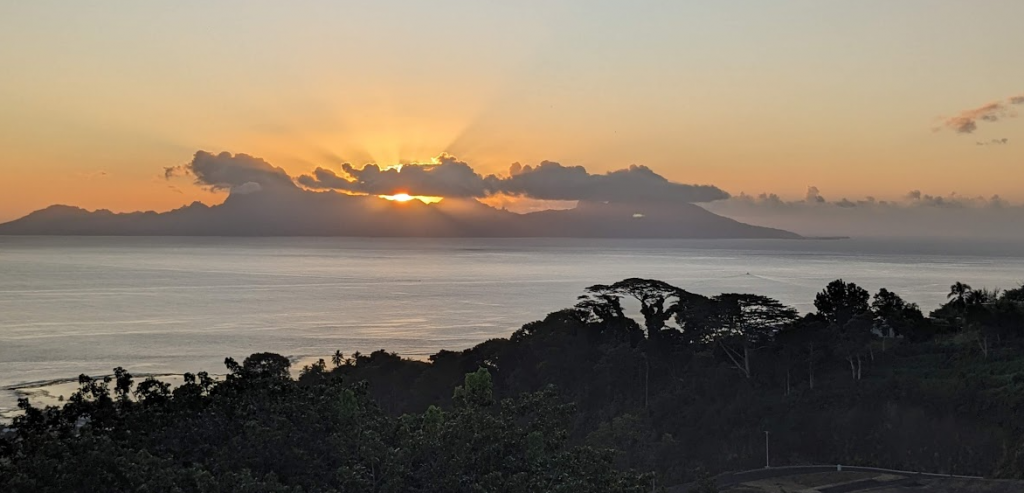
(A brief aside: for the past year, we’ve been using a website called HomeExchange.com to find places to stay in the US and other countries. We’ve used it in Scotland, Ireland, Bonaire, and French Polynesia, and later this year we’ll be using it to stay in Oregon and Mexico. I’ll do a separate blog post about it soon, but if you like to travel, I can’t recommend it enough. Check it out!)
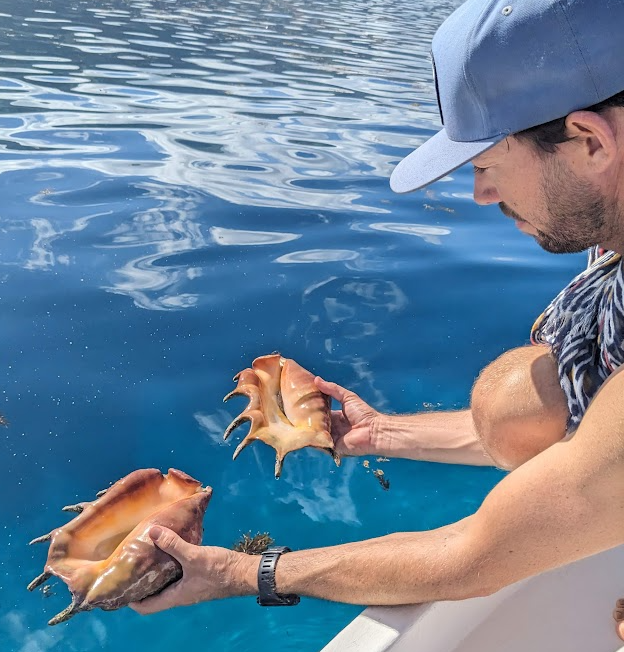
Our first adventure was an all-day boat excursion around Tahiti Iti, with Captain Julien and five other guests. He took us around the lagoon (the area between the island and the fringing coral reef) and showed us a fish farm that consists of four big circular nets suspended in a deep part of the lagoon where they’re raising batfish for sale to local restaurants. He took us to a shallow sandy area where we found some of the giant spider conchs, which we brought up, got a good look at, and tossed back (they’re a protected species). We snorkeled on and around a coral head that rises at least 60 feet straight up from the bottom, where we saw several pipefish, a giant oyster, and an octopus! It would have been a perfect place for us to practice our freediving, but “Captain Ju” had a lot more to show us, so we couldn’t stay long. We swam in a clear, cold, fresh water river that emptied into the lagoon and had fresh poisson cru au lait de coco, which is our favorite new dish from this trip. And we saw Teahupoo, which surfers will recognize as one of the greatest big wave surf spots in the world, and the site of the surfing competition in the 2024 Olympics. (But the swell was small that day, so we didn’t get to see any giant waves.) It was a great way to kick off our ten days on Tahiti!
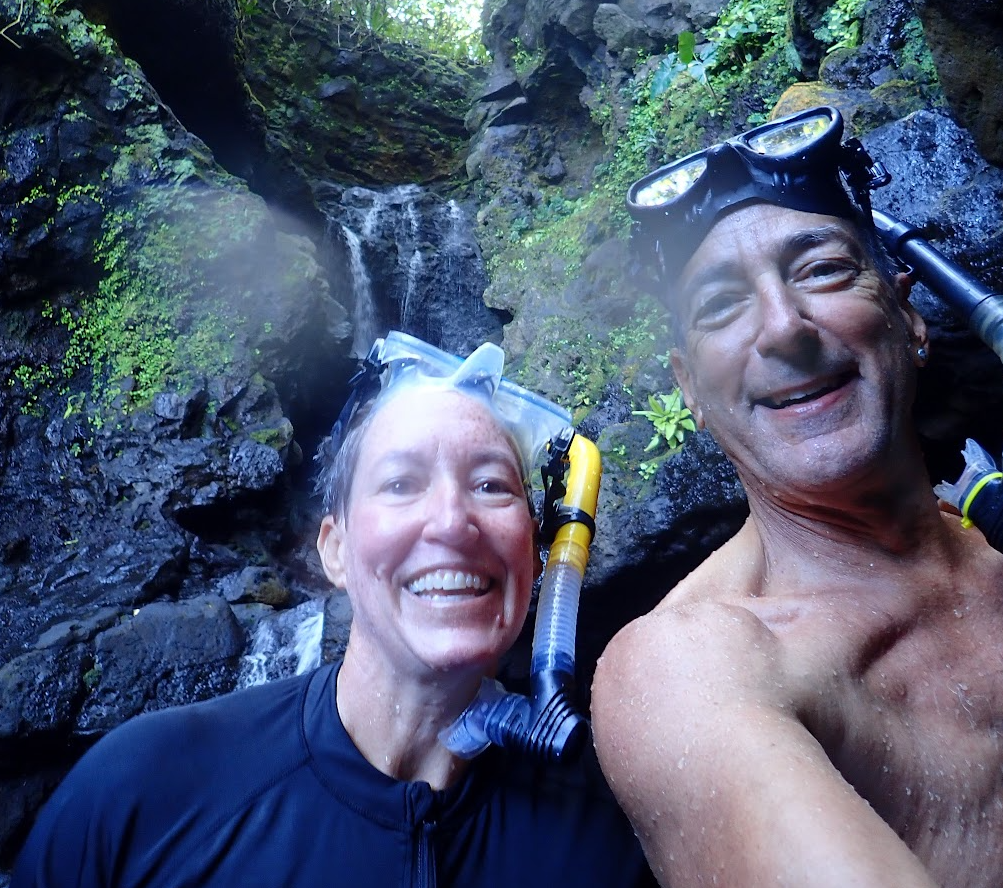
A couple days later, our Home Exchange hosts, Chloe and Thierry, invited us on a hike with them and three of their friends, to see a waterfall and hopefully some of the rare Tahiti Monarch (a.k.a. Tahiti Flycatcher), a seriously endangered bird that lives only on Tahiti. The valley where we hiked is off limits for most people, but Thierry literally co-wrote the book on the birds of French Polynesia, as well as the book on the fish of French Polynesia, the whales of French Polynesia, and the very first scuba diving guide to French Polynesia! So we got a pass for the hike, which ended at a really nice waterfall, where we found a juvenile Tahiti Petrel stranded on the ground. This seabird can’t launch from the ground, and this one was probably a new flyer who got confused in the canyon and ended up on the ground. He wasn’t injured, but was quite weak, so we wrapped him up in a big scarf and got him to the local bird rescue organization, where he was fed, rested, and released a few days later. By the way, we did see a few Tahiti Monarchs, of which there are only a hundred or so still alive, but they’re just little black birds, and don’t make a great picture.
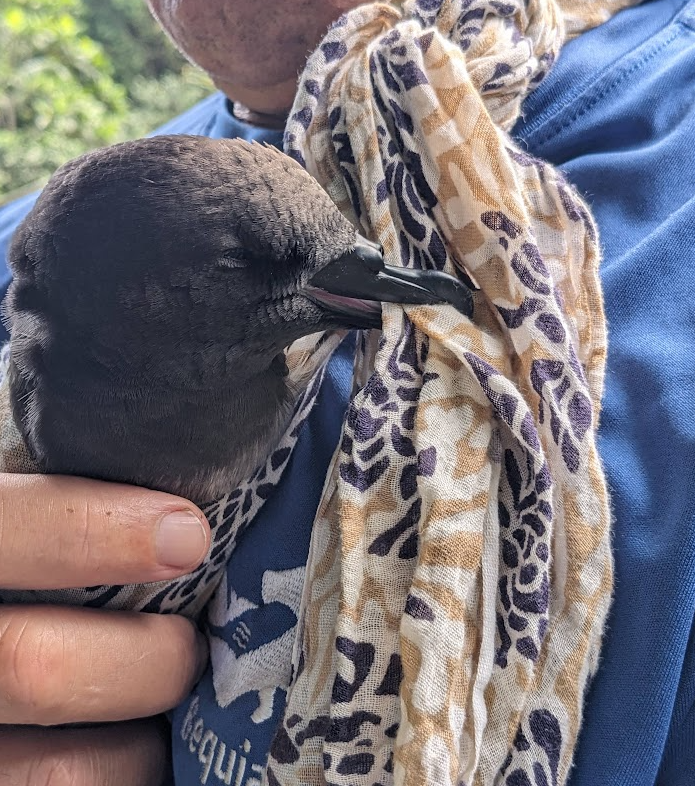
Chloe and Thierry invited us to their home for cocktails a few days later, and after driving up, and up, and up for what seemed like a half hour, we finally reached their incredibly cool hillside home that has an even better view of the reef, the ocean, and Mo’orea than their apartment that we stayed in. It was over drinks that evening that we learned about their long history in French Polynesia (about 40 years), and about Thierry’s books, and about the whales. Approximately 30 years ago, humpback whales started coming to the waters around Tahiti and Mo’orea in increasingly larger numbers each summer, to bear their calves in the warm, safe ocean there. Thierry was running dive charters then, and was possibly the first to start getting in the water with the whales. Now, whale watching and whale swimming (snorkels only – no scuba gear) brings thousands of people to Tahiti each year. Thierry and Chloe still go out three or four times a week during the peak part of the season (mid-September to mid-October), when an estimated 2,000 humpback whales show up! Chloe desribed being in the water with a giant whale’s eye just a few feet away, clearly curious, but gentle as can be, as “one of those things that changes you”. So guess who’s planning a return visit to Tahiti! (No, not this year, and 2024 is supposed to be “The Year We Stay Home”, so maybe 2025?)
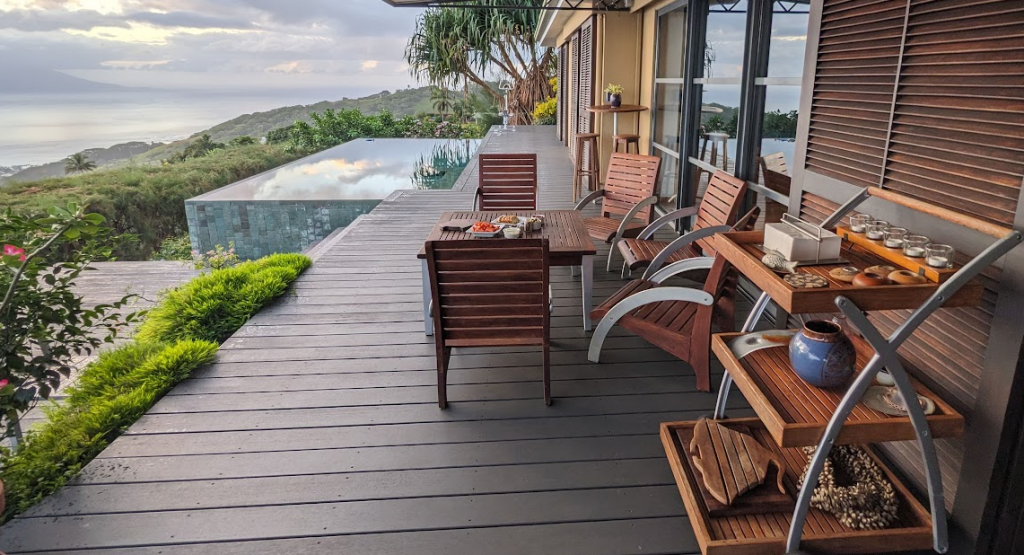
Regular Readers will recall that we got to experience a little bit of the annual celebration called Heiva when we were on the tiny island of Maupiti – traditional dancing and percussion, feats of strength and skill, etc. We were fortunate to be on Tahiti when its Heiva began, and we were even more fortunate to score two tickets for opening night. What we should have learned from Maupiti’s opening night is that Polynesians love ceremony, and that involves a lot of talking. A. LOT. OF. TALKING. When we arrived at our seats for the opening night ceremonies, we wondered why so many seats were empty – it was a sold-out event. 90 minutes later, after all nine judges and 48 other luminaries (no kidding – I counted) had been introduced, and the appropriate ceremonies performed, the seats started to fill up. But not completely, because the first performance was a group of at least 50 men and women from one of the islands competing in Traditional Chanting – a form of singing that was at times melodious, at times cacophonous, mostly monotonous, and at all times unintelligble to us, since we don’t speak Tahitian. It also takes them at least five minutes to get ready for, and then explain each song, so it was kind of a long 30 minutes.
But finally, they made their exit, and it was time for … another group of at least 50 men and women from another of the islands performing the exact same songs in the same Traditional Chant competition. Oh boy. So much chanting.
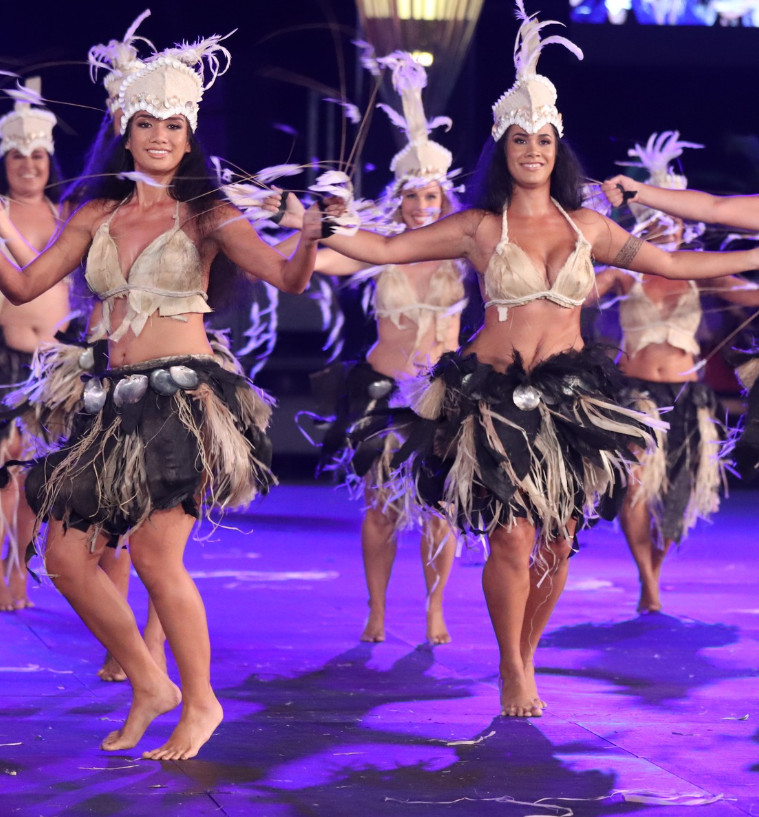
Eventually, though – two and a half hours after the 6:00 start of the Opening Ceremonies – we got what we came for – the dancing! Over 100 dancers, mostly young and tremendously fit, all in amazing traditional costumes, took the floor and put on a show. I’ve never seen hips and knees move like that! They did three numbers, each in different costumes, separated by performances by solo or very small group dances, so it never stopped (the Chanters could learn something from them), and it was all fantastic. Not only the dancing, but also the percussion group that provided the beat. At least 20 of them, all in their own amazing costumes, pounding out the beat on drums, hollowed-out logs, nose pipes (yep!), and other traditional instruments. We were not allowed to take pictures or video, but if you want to get an idea of what we saw, this is the official video of one number from one of the dance groups, that shows pretty much what we saw: click here.
We did three scuba dives while we were on Tahiti, and we snorkeled at one of the public beaches. The first dive featured giant coral cliffs and so many turtles you had to get out of their way, the second showed us yet another species of nudibranch new to us, and on the snorkel, we finally found a big, perfect, gorgeous cowrie shell that we’d been searching for the entire trip. (But there was a dude still living in it, so we let him go.)
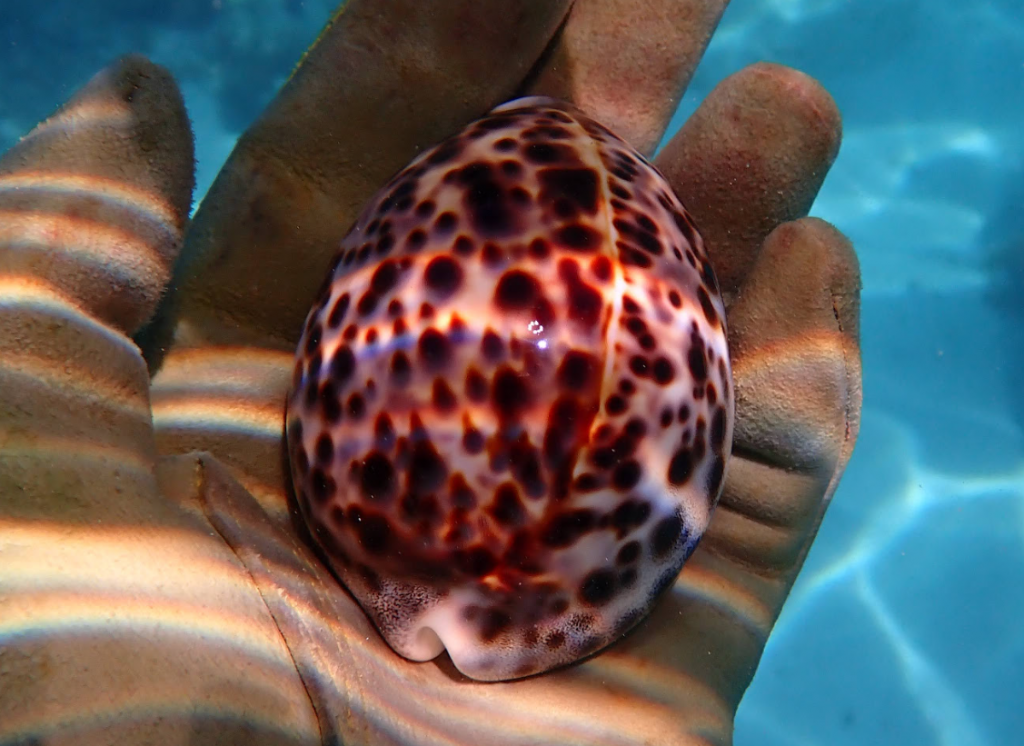
I’ve written about the pearls and the carvings in earlier posts, and while we picked up a few small items along the way, we saved all of our serious shopping for Tahiti, because we knew we could find a lot of everything there. And since it was our last stop, we wouldn’t be lugging stuff around from island to island. (Never has the word “luggage” been more appropriate, as our two wheel-less duffle bags were at the full allowed weight the entire trip, and we lugged them around at least once a week since mid-April.) We had decided to bring home just a few things for us – a few pearls, a few carvings, and a few sets of the very tropical bedding like we had on the beds in most of our stays. Because Heiva was in town, there were two extra marketplaces set up for people from many other islands to sell their crafts; carvings from the Marquesas, woven goods from the Astrals, pearls from lots of islands, shell jewelry from every island, etc., etc. So we spent a lot of time shopping, and talking to the people selling, because in many instances they were the people who had made the items. Wanna see what we got? Well, I’m gonna show you. Not everything, but the highlights:
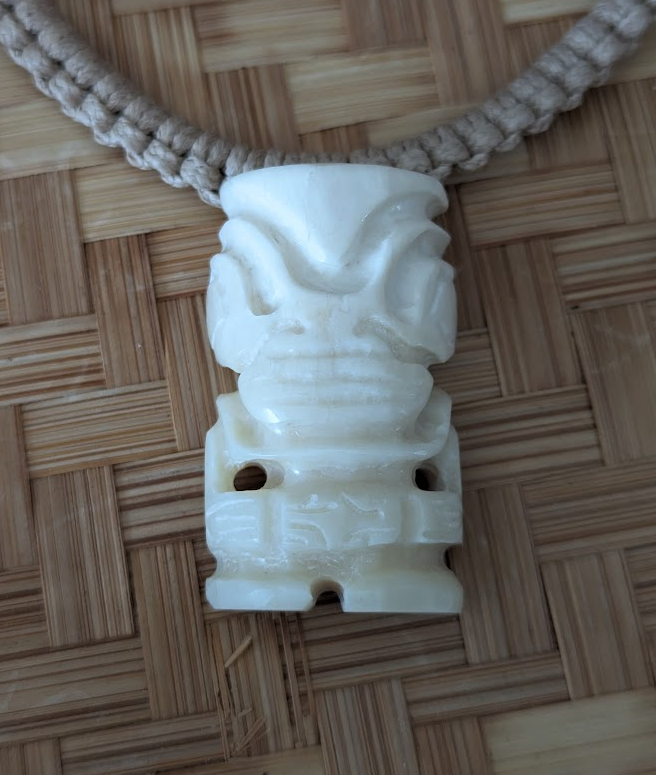
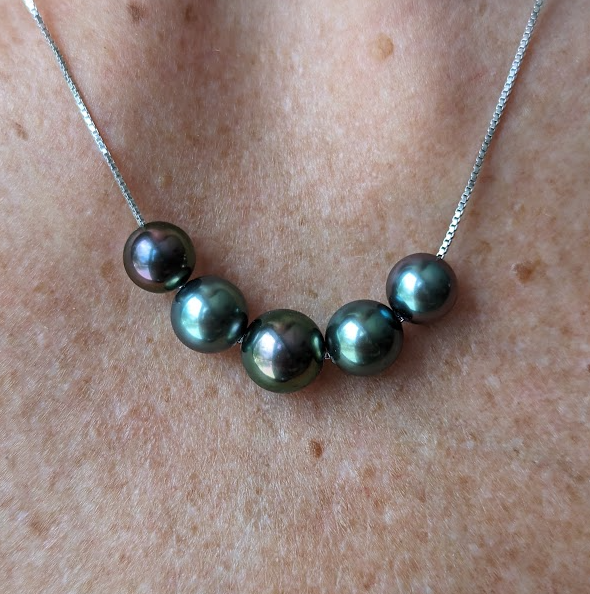
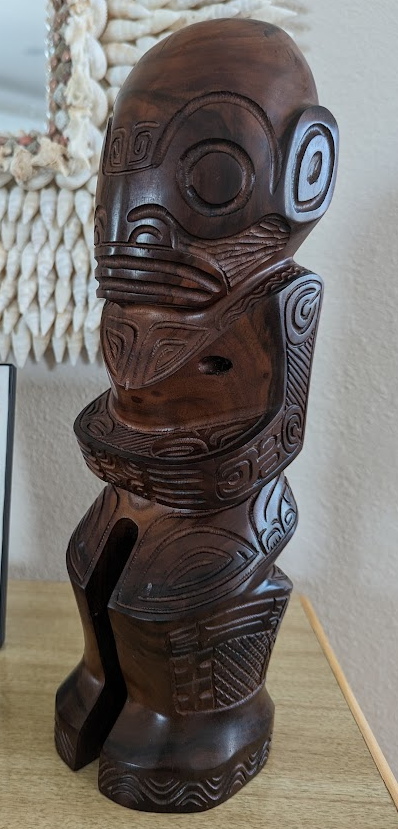
At the beginning of this post, I said that I had been prepared to not like Tahiti, but as you can tell by now, I liked it quite a lot. We both did. And although it’s very different from every other island in many ways, the farther you get out of the city, the more it looks and feels like the other islands. The reef, lagoon, ocean, mountains, and valleys are as beautiful on Tahiti as any other island. The people are, for the most part, just as friendly as anywhere else. And when you need a dose of city life, or just need something that’s hard to get elsewhere, you can probably find it on Tahiti. So when you’re planning your trip to French Polynesia, don’t necessarily skip Tahiti – you just might like it!
Here’s a link to a whole bunch of pictures and videos we took on Tahiti: click here.
And that, Dear Reader, is the last of the posts about this grand adventure of ours. I hope you enjoyed them all! We’re now back home after 108 days and 23 different beds since we left April 1, and it’s feeling really nice to be home. We have a bit more travel planned for the second half of 2023, although nothing nearly so ambitious as what we just did – in fact, I won’t be surprised if we never take such a prolonged trip again. It was a lot. But we’re so glad we took this one, and so glad that you’ve followed along at home! Maruuru!

Let me esplain. No, there is too much. Let me sum up
Yes, there was a lot – way too much to get into all the details. I hope I’ve summed up this whole trip accurately and amusingly!
Great Stuff Smitty. Loved the entire trip. Thanks for sharing
Glad you liked it, Marc. We sure had a blast!